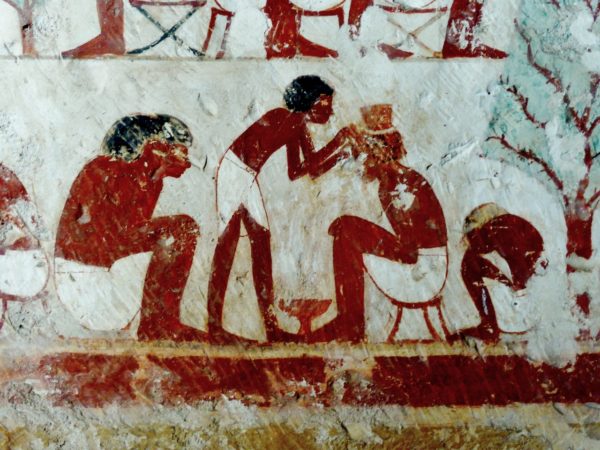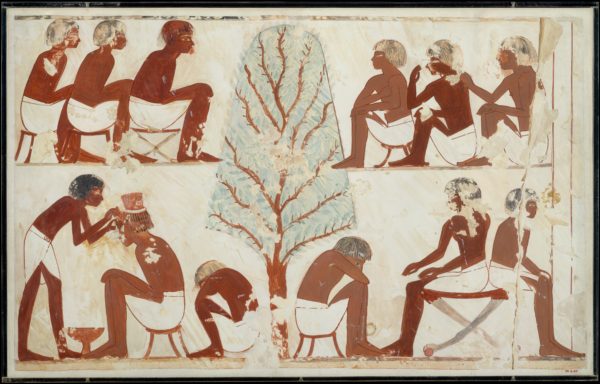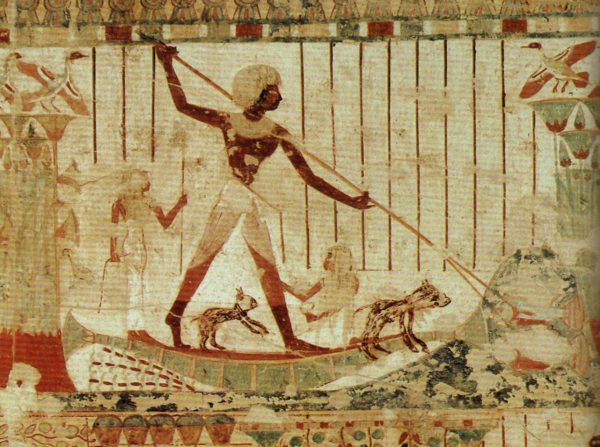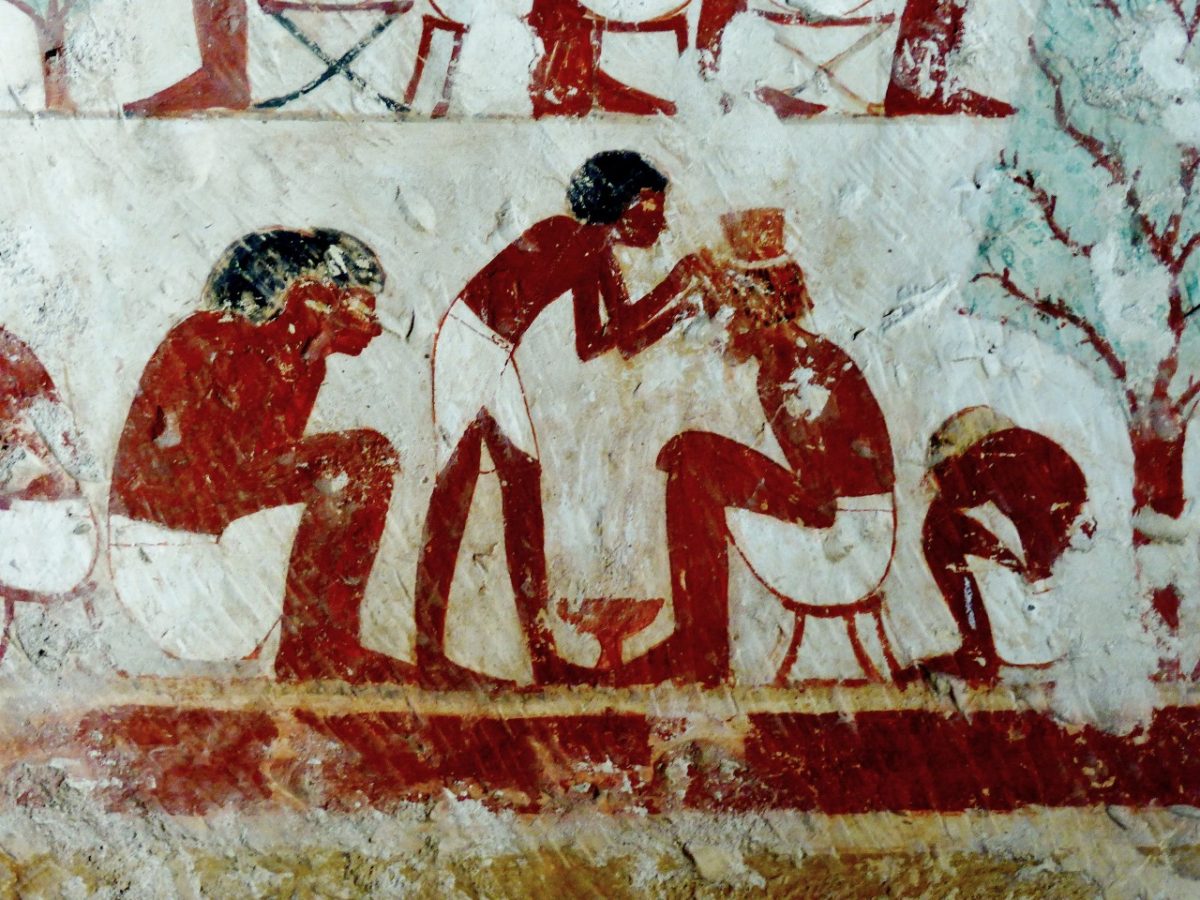Black History Month 2018 (and Nefertiti)
February is Black History Month in North America and the Caribbean. Appropriate then, to launch a reconstruction of a member of the Kemite royal family during the New Kingdom? Well that depends. Many readers will be aware of the most recent reconstruction claiming to be of Nefertiti. For those who missed it there is a summary here. This was launched early in Black History Month, and naturally caused questions regarding the queens complexion, which was more akin so someone from northern Europe than Africa. The Egyptologist involved in the reconstruction, Dr Aidan Dodson at Bristol University has publicly responded by stating that:
The sculptor used images of modern Egyptian women as her reference point for skin-colour- but under studio lights it looked lighter than in real life in which the bust is consistent with many of my Egyptian friends
Source CNN website. Accessed 28 February 2018.
Lighting aside he is clearly missing the point, which is that the modern people in Egypt are not the same people as those who lived there several thousands of years ago. This is a basic fact, because we can chart the changes in population and culture through key events over the past 2000 years.
There are many problems with the identification, process and reconstruction, and I don’t particularly wish to dwell on them, because they detract from reality. I cannot help but wonder why another whitewashing of Kemet was scheduled to coincide with a month that celebrates African cultural heritage. However, I did want to post something to counteract this approach before Black History came to an end, and to remind us of the reality of how people really looked during the 18th Dynasty.
The Tomb of Userhat (TT56)

A friend recently sent me a photograph of the above scene from an old publication and I felt that it would serve both culturally and in terms of the population who are represented to re-situate Kemet where it rightly belongs. A facsimile painting by Nina de Garis Davies, who was a member of the Metropolitan Museum of Art’s Egyptian expedition was produced during the 1925-1926 season, and offers a clearer impression of the scene than the original.

Userhat was an official during the reign of Amenhotep (II) Aakheperrure who ruled from around 1428-1397 BCE. He was a scribe and overseer, who was brought up in the royal nursery. His tomb is number 56 in the Sheikh Abd el-Qurna necropolis, and shows depictions of Userhat and his wife Mutnefret making and receiving offerings. The above scene is, however, unusual. It appears to depict some of the workers, who Userhat was overseer of, resting and having their hair barbered. On the facsimile, the individual twists of hair can more clearly seen. The barber uses a razor and has a bowl of water at his feet.

Perhaps next time Egyptologists want to reproduce the complexions of the Kemite people of the New Kingdom, they should use the original depictions from the period. Just a thought…


Although I’m just joining this post on Kemite Complexions and find the topic quite interesting I’m still perplexed that this conversation still occurs when scholars such as Cheikh Anta Diop, Theophile Obenga, Sally-Ann Ashton, Kimani S.K. Nehusi and Shomarka Keita (just to name a few) have provided an abundance of creditable evidence to demonstrate that the Kemites were an African people with varying hues of pigmentation. What does it take? How about an admission from a mainstream Egyptologist? In a previous post I left a comment about an encounter I had with the late Frank Yurco, an Egyptologist on the staff of the Field Museum and a lecturer at the Oriental Institute, both located in Chicago, Illinois.
This encounter came about as the result of an article written by Frank Yurco (Two Tomb-Wall Painted Reliefs of Ramessess III and Sety I and Ancient Nile Valley Population Diversity) in which he dismissed images from the tomb of Ramesses III often cited by African-centered scholars showing the Kemites with the same dark skin complexion as the Kushites as being “incorrect” and therefore fraudulent (Egypt in Africa, Celenko, 1996). Having previously gained entry into the tomb of Ramesses III in 1987 and taking photos of the images in question which have become known as the ‘Four Races of Man’, I felt compelled to confront Yurco with this evidence. My initial attempt to present this evidence to Yurco began in 1998 and extended over a period of two years and is well documented in my book, “The Battle for Kemet” (2003). Well, the moment of truth came in 2001, after Yurco finally agreed to read an article I had written earlier titled “The Unwrapping of Egyptology” where the photos from the tomb of Ramesses III and my written response to his initial article were featured.
In that moment of truth, face to face, Yurco admitted that the photographs of the Kemites with the same black skin coloration in the tomb of Ramesses III were not only factual but that they were valid representations of how the Kemites saw themselves. Yurco, far from being African-centered never tried to suggest that it may have been an error on the part of the tomb workers responsible for painting the images in the tomb. He offered no excuses or explanations whatsoever. When presented with the facts Yurco excepted them and I respect him for that.
The question now is how much longer will it take others to realize that “the king is not wearing any clothes” (The Emperor’s New Clothes, Hans Christian Andersen) no matter how much they try to convince us and themselves that he is.
If they now know that life, civilization of man began in Africa. That Africa is the cradle of civilization, and from this dark continent of people the world became populated. Egypt is in Africa, so, why is it so inconceivable that the ancient Egyptian were African. No, I do not believe that the Egyptian of today are the original. They are committed to reducing us to a legacy of illiterate savages and slaves. But we know the truth.
Is it known whether there’s a connection between the presence of ochre on mummies and the the colours used for skin colour in tomb murals?
The following article on finds at Gebel Ramlah says:
“Trepanation is not the only reason why this is an interesting burial” – Dr. Jórdeczka told PAP. A clamshell was placed on the man’s temple, and his whole body was covered with ochre – reddish mineral, used since the Paleolithic period as a dye, among other things. The deceased was placed in the foetal position, strongly compressed – his knees were pulled up to his forehead.”
http://scienceinpoland.pap.pl/en/news/news,410305,trepanation-of-the-skull-before-millennia-ago-in-sudan.html
Also:
“Reddish ochre
All the graves found contained only a few modest grave goods. Every burial pit contained lumps of reddish ochre which the archaeologists consider to being an important and integral part of their belief system, hence the inclusion in every grave. In a few graves the archaeologists discovered bracelets made of ivory or shells imported from the Red Sea.”
http://www.archeolog-home.com/pages/content/gebel-ramlah-egypte-unique-neolithic-child-cemetery-found.html
The last six lines are idiotic, but this is what Carol Andrews writes in Egyptian mummies (British Museum 1984):
“Often the whole body was painted, with red ochre in the case of male mummies, yellow for females. The same colouring convention was observed for the sexes in painted statues, coloured reliefs and wall-paintings until the mid-Eighteenth Dynasty. The idea behind it was that, even if he were the highest official in the land, it was the man of the house who went out in the sun and got a tanned skin. On the other hand, no highly-born woman would allow herself to be seen except with a pale skin; if she had to go out into strong sunshine she was suitably covered or carried a shade. The only women with sun-tanned skins would be those who belonged to the lowest social class, such as field workers” (pp29-30).
There was also this from South Africa:
“Excavations in 2008 at Blombos Cave, South Africa, revealed a processing workshop where a liquefied ochre-rich mixture was produced and stored in two Haliotis midae (abalone) shells 100,000 years ago. Ochre, bone, charcoal, grindstones, and hammerstones form a composite part of this production toolkit. The application of the mixture is unknown, but possibilities include decoration and skin protection.”
http://science.sciencemag.org/content/334/6053/219
Do we know whether ochre has been found with Kushite burials?
Do you have any where near the level of expertise as this Dr has?
Interesting.
The tomb of Userhat is one of my favorites from the 18th dynasty period; and you are right, the images from the hundreds of New Kingdom tombs period shows countless (thousands possibly) of dark-skinned, rank-and-file Kemites as a matter of course, and should be their standard depiction in the public sphere.
Also, you’ve mentioned the oft overlooked fact of the Arab invasion (the Persian, Greek, Roman, Hyksos, Asiatic among others), which many miracolously infer a continuity between the ancient and modern! That would be akin to saying that modern day Americans were the Incas, Aztecs, Olmecs, without any significant turnover in population.
A potential complication for this argument is that, in most Egyptian art from the Old to Middle Kingdom, female subjects are distinguished from their male counterparts by having yellow-ochre skin. In the New Kingdom, one does find exceptions to this rule which portray Egyptian women as deep brown-skinned like the men, and apparently both men and women are usually painted brown in earlier, predynastic art. But how would one account for the representation of men and women as having such distinct skin tones during the Old and Middle Kingdoms if all Egyptian portrayals of themselves are to be taken at face value?
For further reading, see this book by Mary Ann Eaverly:
https://www.amazon.com/Tan-Men-Pale-Women-Comparative/dp/0472119117
There is a clear distinction between the use of colour for symbolism and the depiction of people in everyday scenes. This explains why there are discrepancies.
I understand tomb paintings are supposed to have a religious function (by depicting an idealized afterlife), so I don’t see why everyday scenes in this context couldn’t have possessed symbolism as well. That said, it’s my belief that those New Kingdom paintings where both sexes are portrayed with deep brown skin reflect the reality most. The fact that Egyptians typically portrayed Middle Eastern “Asiatics” and Mediterranean Libyans as paler than themselves might also be telling.
Do you have any where near the level of expertise as this Dr has?
You need to check the author of this article’s credentials.. I think you might might come to the conclusion she knows what she is talking about.. Have you ever heard of the Fitzwilliams or the Petrie museum? I’m not saying anything is wrong with asking questions but she has access to the worlds largest collection of kmt artifacts in the world..